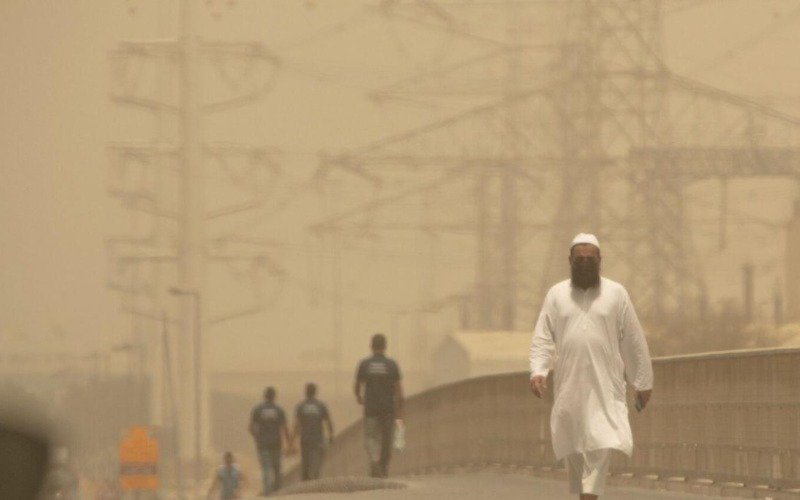UAE dust storm to linger until next week: Some health hazards to be wary of

The thick orange haze of dust that has blanketed the UAE will last for a few more days with a possibility to linger until the next week, according to experts from the National Centre of Meteorology (NCM).
Motorists and residents faced reduced visibility on the roads, which came down to a few hundred metres. This comes after north-westerly winds of up to 40 kilometres swept across the UAE on Tuesday and Wednesday, covering cities like Dubai and Abu Dhabi.
Meteorology experts highlight that a sandstorm is different from a dust storm, and sandstorms in each area, would have their unique characteristics.
Difference between sandstorm and dust storm
A sandstorm is caused by strong winds that make the loose sand particles vibrate.
In a process called saltation, the particulates are carried up because of the force of the wind, before being brought down to the ground again. Once they become fine particles, they suspend in the air and travel.
According to National Habor Weather Service, the particles in a dust storm are smaller in size than particles in a sandstorm. Apparently, it can be launched higher, and people can experience dust-filled air over an extensive area.
Dust storms can be categorised as localised and channelised dust storms to weather-related dust storms.
He adds, “In countries North of the Arabian Gulf, it is a storm. But in the UAE, it’s not a storm, it is dust suspension. This phenomenon happens every year. But sometimes the frequency increases, and sometimes the frequency decreases. But every year, we experience this. The UAE is not experiencing strong winds, unlike Iraq, Saudi Arabia and Jordon, who are experiencing really strong winds.”
Whether climate change will result in increased intensity and frequency of sand and dust storms is still unknown. Shamal winds (are low-level north-westerly winds) blow almost continuously in summer, often stirring up huge clouds of sand and dust.
“We are still experiencing north-westerly wind; the entire area is experiencing a dust storm. But there is another kind of dust storm over Iraq and north Saudi Arabia. So, some dust storms may again approach our area. Over the next five days, we will generally experience dusty weather. But this will be less than yesterday. So, the haziness will continue over the next few days,” Habib adds.
Sandstorm in UAE: Will it affect your health?
The dust storm’s haze that has blanketed the country reduced visibility, and may trigger health issues.
Medical practitioners advice people to stay indoors during this period, pointing out that dust storms may cause several health issues and adversely affect the respiratory system.
“Running nose, sneezing, throat discomfort, wheezing, chest tightness, coughing, and itchy eye are the symptoms of inhaling dust particles,” said Dr Aslam.
Dr Ahmed ElMansoury, consultant pulmonology, NMC Royal Hospital, Sharjah, said that the dust and sandstorm carry infection and allergic particles.
“The symptoms occur because of exposure to the dust and other particles like viruses, bacteria and fungus that gets mixed in the dust,” added Dr ElMansoury.
Dr ElMansoury added that the dust storm may have increased symptoms for asthma patients and pneumonia patients.








